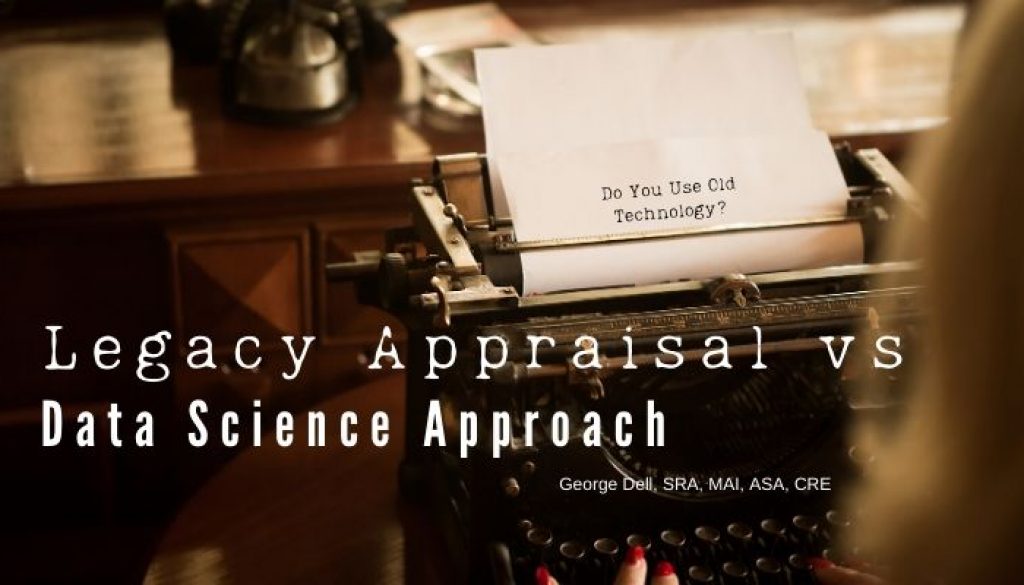The legacy vs the upstart? What is the one single big difference?
The traditional appraisal process is accepted. The Data Science viewpoint is new. (John Tukey predicted the impact of computer power on data analysis as an empirical science – in 1962.)
Traditional appraisal has a proven legacy: It focuses on property analysis – leading to a personal opinion “worthy of belief”. Pick some comps, compare with three or less ‘approaches’, and reconcile/explain the discrepancies in words.
The Data Science viewpoint focuses first on the overall data. In turn, Evidence Based Valuation (EBV)© focuses first on the market analysis.
The traditional valuation process focuses on “Property Description.” This includes “Comparable Property Data” and “Subject Property Data.” In this legacy process, pick comps comes first — before market analysis. In the “new valuation modeling paradigm1” market analysis comes first!
In the past: pick your comps, then analyze your market.
Today: Identify your market, then analyze your market.
Why is this the one single big difference? Simple. Times, they have changed! When I became an appraiser, the major task in which I was trained was “how to get comps.” There were no commercial-industrial data services. MLS came out in print. A book with the prior month’s sales, in the mail, about a week after the end of the month. We also had weekly hot sheets. And if you were really desperate, you could find a great comp listing, then hope it closed – calling the agent to ask.
Typically, you had a couple of comps you’d used before. Found another one easily. Then waited for a phone call back on the ‘best most recent’ comp. And your work was done. The typist typed. You edited. The typist retyped. You signed in blue ink. And it went in the mail.
Opinion and judgment and experience and designations were king. Who you knew was as important or more important than what you knew. It was important that certain brokers knew and liked you.
In those days, in the legacy practice, picking comps, judgment, was all the market analysis you needed. No one cared. You were judged on what your clients expect, and on doing what your peers did.
Picking comps first made sense. Today it is non-sense.
Valuation is essentially an analysis of supply and demand and marketability. Why did picking comps come first? It was because data was sparse. Today that is not the case. Today in most appraisal office areas, data is instantly available on the internet. All the data. Just like USPAP requires: “collect, verify, and analyze all information” and “analyze such comparable sales data as are available” (Standards Rule 1-4), [Emphases added!].
In the past, all the data was not available. Today all, or substantially all, the data is available. The data science approach to value embraces all information necessary, from all the data available.
The legacy model of appraisal appears to violate this basic USPAP rule. EBV© does not. Evidence Based Valuation focuses on all available data, and applies all information necessary.
[1]Marvin Wolverton, MAI, PhD, in The Appraisal Journal, Spring 2014, letters to the editor. Dr. Wolverton is the author of the Appraisal Institute book An introduction to Statistics for Appraisers.
